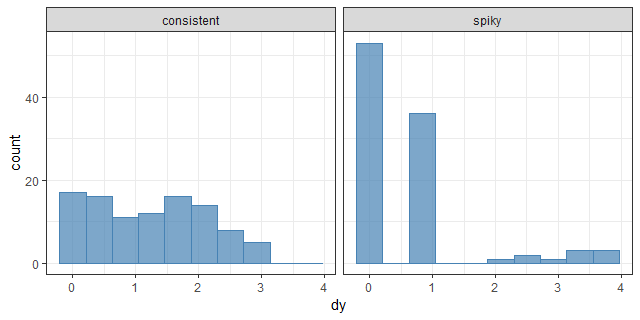I have a time-series database of users and their growth on our platform over time. I am trying to determine from this database users who are showing a consistent growth over time (and especially exponential growth). However, I am struggling to determine between users who have grown consistently over a period of time, against those who have grown very quickly over 1-2 days and then stopped growing.
(excuse the crudely drawn diagrams)
Effectively I want to find people with this type of growth (and give them a high score):
And give people a lower score when their growth looks like this:
Adding to this, its more important to see the increase in growth relatively, rather than absolutely.
I would be interested to know what sort of approach would allow me to score these correctly.





